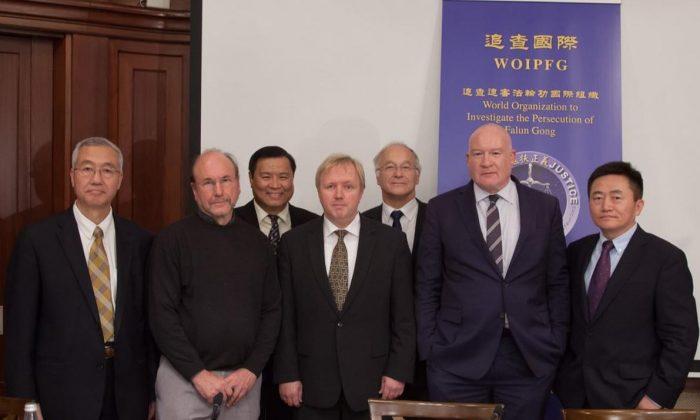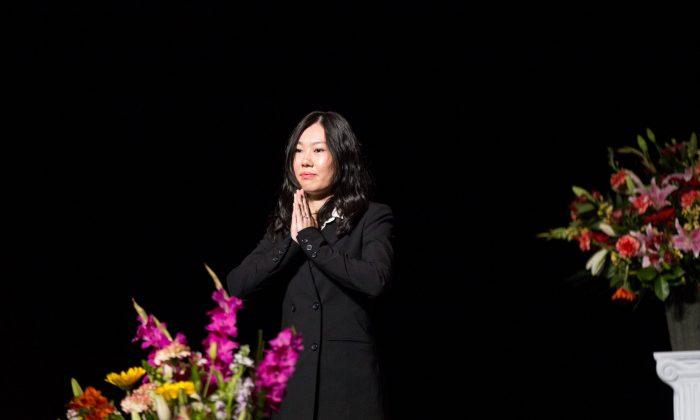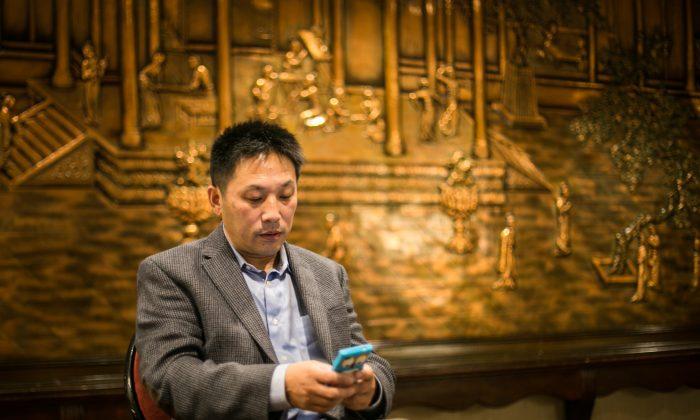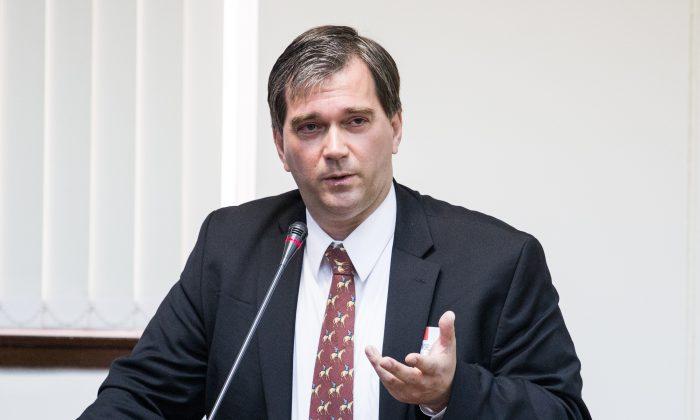Cai Guoqiang, a nationalist Chinese artist, is famous in China for blowing up symbols of the West in front of paying Westerners. But what must have been one of his best performances took place on the National Mall in Washington, D.C., in late 2012, when he blew up a four-story-tall Christmas tree in front of the whos-who of the US-China policy elite. The black dust from the incinerated pine needles took months to clean off the red Smithsonian castle—and the feat went along with $250,000, compliments of the U.S. taxpayer. Cai had recently been awarded the State Department’s Medal of Arts for “contributions to the advancement of understanding and diplomacy.”
So goes the startling opening anecdote in the most recent book by a well-known China analyst who has the ear of the Pentagon, and once advised both Donald Rumsfeld and Dick Cheney.
“I don’t know if any of the guests contemplated why they were watching a Chinese artist blow up a symbol of the Christian faith in the middle of the nation’s capital less than a month before Christmas,” Michael Pillsbury writes in his new book, “The Hundred-Year Marathon: China’s Secret Strategy to Replace America as the Global Superpower.”
“In that moment, I’m not sure that even I appreciated the subversion of the gesture.”
But the general subversiveness of long standing Chinese communist policy and attitudes toward the United States are given an overdue and lengthy appreciation in his new book.
Its basic thesis is that the Chinese Communist Party has, since soon after it came to power in 1949, been running a strategy to become the most powerful country in the world, and doing so through using the United States’ government, people, money, intellectual property, and technology.
The U.S. government, meanwhile, has gone along with it—even helped—because it never apprehended that this was the Chinese game plan, Pillsbury says. A class of elites in the United States has even helped the process. The thinking among this crowd, Pillsbury says, was that China would happily integrate into the international community and follow the global norms that are implicitly underwritten by the United States—not try to replace them.
“It’s not an openly declared strategy,” Pillsbury said at a recent introduction of his book at the Hudson Institute. “The first rule of Fight Club is that you don’t talk about Fight Club. China does not openly describe this strategy—in fact they’re very sensitive about it being disclosed.”
In his book, he writes that: “the constructive engagement crowd, populated by prominent academics, diplomats, and former presidents, has held significant sway over policymakers and journalists covering China. I should know—I was a member of this group for many decades.”
At Hudson, Pillsbury’s book was introduced by Husain Haqqani, Pakistan’s former ambassador to the United States—he said his own book, “Magnificent Delusions,” illustrated a similar dynamic between Pakistan and America.
“The reason is, Americans always assume that others basically want the same things we do… They have a simple worldview,” Haqqani said.
The Chinese worldview, at least as depicted by Pillsbury, is far from that of the United States, and is anything but simple.
It depicts a world where—when the PRC is on top, by 2049, the putative end year of its marathon—China won’t be a hegemon, bossing other countries around like it says the United States does, but instead “will use its virtue, soft power, natural attractiveness,” to lead the world. Oh, “and perhaps military force when there is disharmony and countries do not go along with its virtuous leadership,” Pillsbury adds.
This is a common vision among the hardlines, called “hawks,” in the Chinese military and theoretical establishment.
At the very least, one of the core methods the Chinese have used will be familiar to Americans: Pillsbury likens it to “one of Tom Sawyer’s tricks.” This recalls the scene in Mark Twain’s novel where Tom is being punished with whitewashing a fence, and manages to fool his impressionable friends into thinking the chore is in fact a great lot of hot fun. “China’s using other country’s technology to win its 100 year marathon,” Pillsbury said.
The book is based on several decades experience around China and Chinese military officials and scholars. At one point in the text Pillsbury writes: “I was told—by the same people who had long assured me of China’s interest in only a modest leadership role within an emerging multipolar world— that the Communist Party is realizing its long-term goal of restoring China to its ‘proper’ place in the world.”
He continues: “In effect, they were telling me that they had deceived me and the American government. With perhaps a hint of understated pride, they were revealing the most systematic, significant, and dangerous intelligence failure in American history. And because we have no idea the Marathon is even under way, America is losing.”





